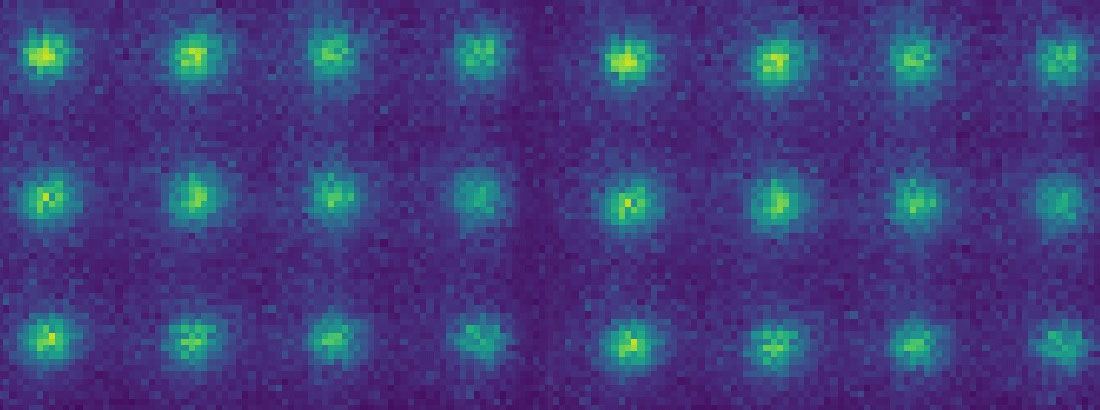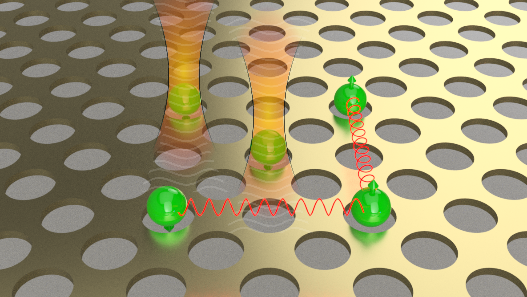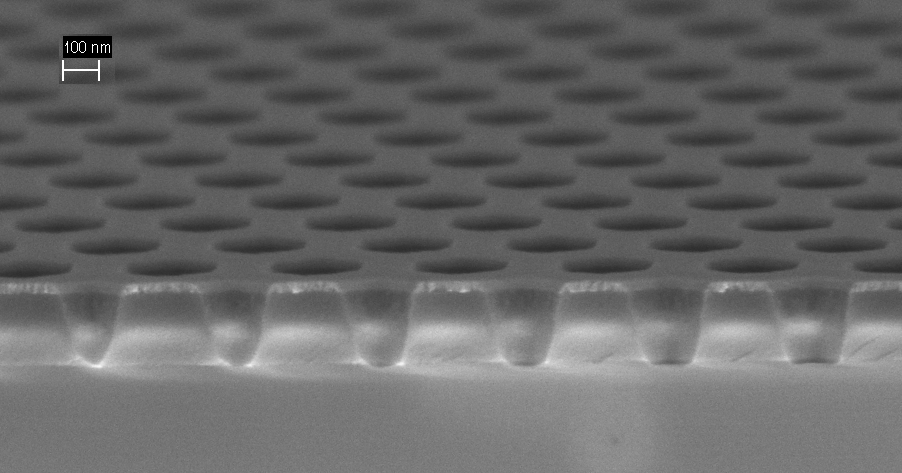
Cold-atoms & Photonics
We work on a new type of quantum system that features Cesium atoms and photons interacting via a photonic structure. Our current research aims to implement quantum simulations so solve complex mathematical problems.
Quantum simulation
The research is a part of a Novo Nordisk Foundation Research Centre: Quantum-for-Life. Our previous research focused on enhancing the interaction between the atoms and light through a nanofiber.
Quantum simulation is today’s solution to complex mathematical problems in biology, chemistry and physics, problems which cannot be solved efficiently on classical computers.
The idea is to make quantum particles interact with each other, and tailor those interactions to match a mathematical model of the original problem.
- You can then obtain information about the physical system by measuring the model-system directly.
- One problem that challenges conventional computing is how a leaf absorbs light and delivers the energy to the chemical reaction that turns CO2 into oxygen and sugar.
- This transport exhibits quantum coherent dynamics [1], even though it happens in a biological system in a complex environment.
Through Quantum-for-Life, we work to simulate this problem with a controllable quantum system made of atoms and photons. We collaborate with mathematicians, programmers, and chemists to translate the molecular models into something we can build in our labs.
Engineering interactions
Our research group specializes in controlling and manipulating two types of quantum particles: photons which constitutes light, and certain atoms with favourable properties, e.g., Cs, Rb, Sr, etc.
- We aim to implement quantum simulation with photons and Caesium atoms.
- The interaction between those particles can be enhanced and customized by way of a nearby photonic structure [2] – the principle is illustrated on the figure below.
Our research is a highly multi-disciplinary, merging cold-atom optics with nano-photonics, to solve mathematical problems in all branches of science.

Nanophotonics
One research challenge is to keep light in one place long enough to allow for efficient interactions. Our solution is to place single atoms into a carefully engineered nano-photonic array.
The structure prevents the atoms from emitting photons, creating instead a cloud of non-propagating light that surround the individual atoms.
- This phenomenon occurs thanks to interference within the nanostructure.
- Nearby atoms sense this cloud, leading to an enhanced atom-atom interaction mediated by the light.
- Crucially, the light-cloud can be engineered to a certain shape and strength by either changing the structure or by applying additional controlling laser beams.
- That configurability enables tuneable atom-atom interactions.
The figure below depicts the actual nanostructure.

Trapping atoms
To place atoms near the nano-photonic structure, we are developing an advanced apparatus to first trap individual atoms in laser beams (optical tweezers) and then transport the atoms towards the surface of our structures.
Large arrays of single atom tweezers can be produced and manipulated using acousto-optic deflectors, allowing for precise placement of atoms with respect to the photonic structure.
The photo below shows such an apparatus.

In effect, we will assemble new hybrid materials one atom at a time. Our approach can be reconfigured on-the-fly, can be scaled up by with many identical atoms and can operate at room-temperature.
References
[1]: Long-loved quantum coherence in photosynthetic complexes at physiological temperature,
[2]: Colloquium: Quantum matter built from nanoscopic lattices of atoms and photons, D. E. Chang, J. S. Douglas, A. González-Tudela, C.-L. Hung, and H. J. Kimble, Rev. Mod. Phys. 90, 031002 – Published 1 August 2018
[3]: Luan, X., Béguin, J.-B., Burgers, A.P., Qin, Z., Yu, S.-P. and Kimble, H.J. (2020), The Integration of Photonic Crystal Waveguides with Atom Arrays in Optical Tweezers. Adv. Quantum Technol., 3: 2000008. https://doi.org/10.1002/qute.202000008
